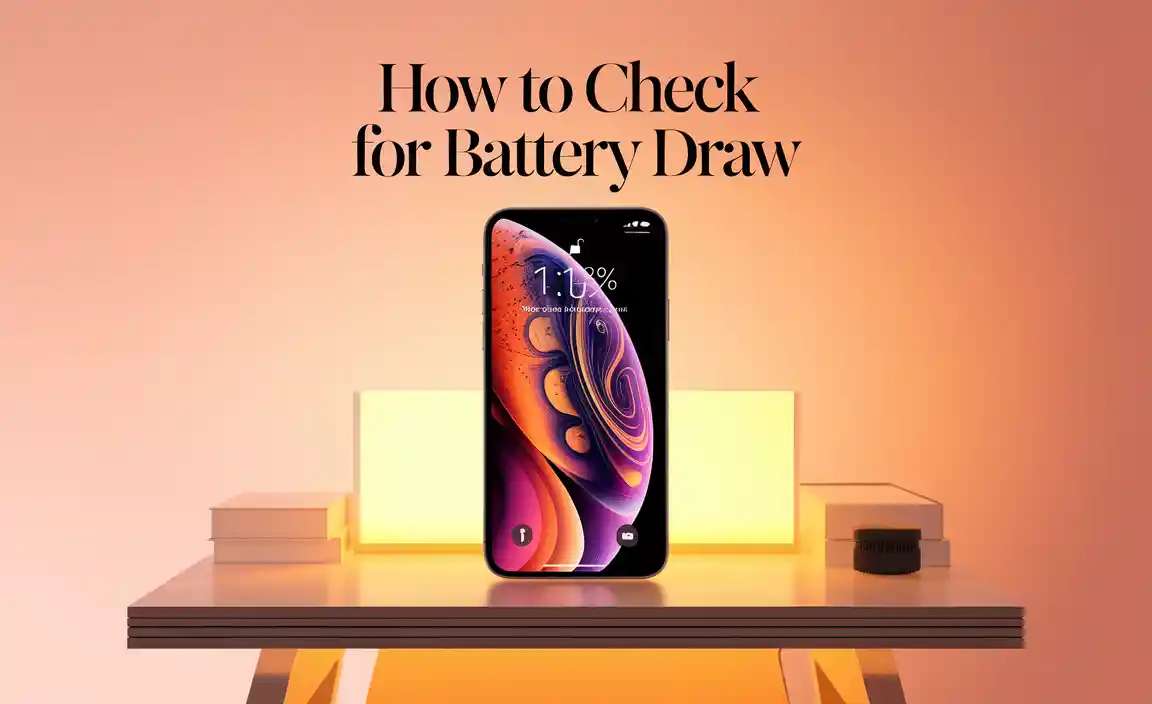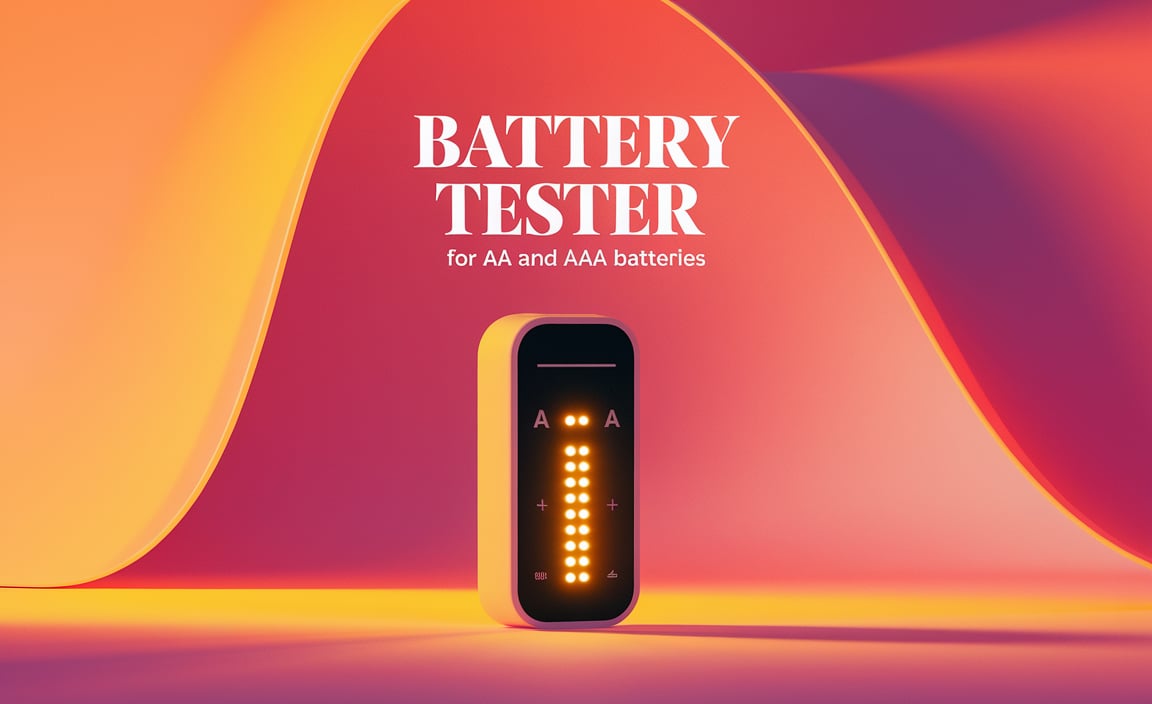Quick Summary: A normal car battery typically lasts 3 to 5 years. Understanding your car battery’s age, regular maintenance, and signs of wear can help you anticipate replacements and avoid getting stranded. This guide provides essential tips for keeping your car’s power source in top shape.
Normal Battery Life For Car: Your Essential Power Guide
Is your car battery acting up? You’re not alone! Many drivers wonder how long their car battery should last and what to do when it starts to fade. A dead car battery can be a real headache, leaving you stuck and stressed. But don’t worry, understanding your car’s power source is simpler than you think. We’ll walk you through common battery life, how to care for it, and when it’s time for a new one. Let’s get your car running smoothly again!
Understanding Your Car Battery: The Heartbeat of Your Vehicle
Your car battery is more than just a box of acids; it’s the essential component that sparks your engine to life and powers all your car’s electronics when the engine is off. Think of it as the heart of your car, providing the initial jolt of energy and keeping everything running smoothly.
Car batteries are typically lead-acid batteries. They work by a chemical reaction inside them, creating electrical energy. This energy is crucial for starting your engine and also for powering things like your radio, interior lights, power windows, and the car’s computer system. When your engine is running, the alternator takes over to generate electricity and recharge the battery.
How Long Do Car Batteries Usually Last?
The most common question is: “What’s a normal battery life for a car?” Generally, you can expect a car battery to last between 3 to 5 years. However, this timeframe isn’t set in stone. Several factors can influence a battery’s lifespan, making some last a bit shorter and others potentially longer.
It’s important to remember that this is an average. Some batteries might start to show signs of weakness sooner, while a well-maintained battery in ideal conditions might even exceed the 5-year mark. Keeping an eye on your battery’s age and health is key to avoiding surprises.
Factors Affecting Car Battery Lifespan
What makes one battery last longer than another? It’s a mix of environmental conditions, how you use your car, and the quality of the battery itself.
- Climate: Extreme temperatures, both hot and cold, put a strain on your battery. Very hot weather can accelerate the fluid evaporation and corrosion inside the battery, while very cold weather reduces its starting power.
- Driving Habits: Short trips where the engine doesn’t run long enough to fully recharge the battery can shorten its life. Conversely, frequently draining the battery by leaving lights or accessories on also takes a toll.
- Vehicle Age and Condition: Older vehicles might have electrical systems that put more draw on the battery. Also, issues like a faulty alternator or parasitic drain (where something is silently drawing power when the car is off) can wear out a battery faster.
- Battery Quality and Maintenance: A high-quality battery from a reputable brand will often last longer. Also, keeping battery terminals clean and ensuring the battery is securely held in place are simple maintenance steps that help.
- Underhood Location: Batteries located in very hot engine compartments tend to suffer more from heat-related issues.
Signs Your Car Battery Might Be Failing
Your car will often give you a few hints before the battery completely gives up. Being aware of these signs can save you a lot of trouble.
Common Warning Signs
- Slow Engine Crank: This is probably the most common sign. When you turn the key, the engine sounds sluggish, like it’s struggling to turn over. It might sound weak or slow.
- Check Engine Light: While this light can mean many things, a failing battery can sometimes trigger it, especially if it relates to the charging system.
- Dim Headlights and Interior Lights: If your lights seem dimmer than usual, especially when the engine is off or at idle, it could indicate a weak battery.
- Corrosion on Terminals: Look at the metal posts where the battery cables connect. A powdery, bluish-green buildup means corrosion. This can prevent a good electrical connection.
- Swollen Battery Case: A battery case that looks puffed out or swollen might be a sign of overheating or internal damage. This is a serious sign and the battery should be checked immediately.
- Bad Smell: If you notice a sulfuric or rotten egg smell coming from under the hood, it could mean the battery is leaking or overheating.
- Old Age: If your battery is already past the 3-year mark and you start noticing any of these symptoms, it’s wise to get it tested.
When to Replace Your Car Battery
So, how do you know for sure if it’s time for a new one? It’s a combination of age, condition, and symptoms.
Age is a Factor
As mentioned, the average lifespan is 3–5 years. If your battery is nearing or has passed this age, even without obvious symptoms, it’s a good idea to have it professionally tested. Early replacement can prevent being caught off guard.
Performance Issues
If you’re experiencing any of the warning signs discussed above, especially a slow crank or dim lights, it’s a strong indicator that the battery is weakening. Don’t wait until it fails completely.
Professional Testing
Most auto parts stores and repair shops offer free battery testing. They use a specialized tool called a voltmeter or load tester to check the battery’s voltage and its ability to hold a charge under load. This is the most reliable way to determine the battery’s health.
Car Battery Maintenance: Simple Steps for a Longer Life
Taking good care of your car battery can help extend its lifespan and ensure it performs reliably. These are simple, often DIY-friendly steps.
Essential Maintenance Tasks
- Keep Terminals Clean: Corrosion is the enemy of good electrical connections.
- How to Clean: Disconnect the battery cables (always the negative terminal first, then positive). You can use a wire brush or a terminal cleaning tool. A paste of baking soda and water can help neutralize acid. Rinse with clean water and dry thoroughly before reconnecting (positive first, then negative). A thin coat of dielectric grease after cleaning can help prevent future corrosion.
- Ensure Secure Mounting: A loose battery can vibrate, which can damage its internal components and lead to premature failure. Check that the battery hold-down clamp is tight.
- Check Fluid Levels (for serviceable batteries): Some older or specific types of batteries have removable caps. If yours does, check the electrolyte level. If it’s low, add distilled water until the plates are covered. Never overfill. Most modern car batteries are “maintenance-free” and sealed, so this step may not apply to you. A good resource for understanding battery types is from the U.S. Department of Energy’s Clean Cities program, which offers insights into battery technologies and maintenance: CleanCities Battery Fact Sheet.
- Protect from Extreme Temperatures: If possible, park in a garage or shaded area during extreme hot or cold weather.
- Avoid Deep Discharges: Try not to drain the battery completely by leaving accessories on when the engine is off. If you have a long drive, make sure it’s long enough to let the alternator recharge the battery.
Choosing a New Car Battery: What You Need to Know
When it’s time for a replacement, picking the right battery is important. You don’t want to just grab the cheapest one on the shelf.
Key Considerations When Buying
- Battery Size and Group Number: Your car’s manual or a quick search online will tell you the correct battery group size. This ensures it physically fits in the battery tray and the terminals are positioned correctly. The BCI (Battery Council International) group size is a standard for this.
- Cold Cranking Amps (CCA): This measures the battery’s ability to start your engine in cold temperatures. If you live in a cold climate, look for a battery with a higher CCA rating than what’s recommended for your vehicle.
- Reserve Capacity (RC): This indicates how long the battery can deliver a certain amount of power if the alternator fails. A higher RC is generally better.
- Warranty: Look for a battery with a good warranty (e.g., a 3-year free replacement warranty). This offers peace of mind and protection against early failure.
- Brand Reputation: Choose batteries from well-known and reputable manufacturers.
Where to Buy and Install
You can typically buy car batteries at:
- Auto parts stores (e.g., AutoZone, O’Reilly Auto Parts, Advance Auto Parts)
- Car dealerships
- Some mass retailers (e.g., Walmart, Costco)
Many auto parts stores offer installation services, often for a small fee or sometimes for free with purchase. If you’re comfortable doing it yourself, it’s a manageable DIY project. Always follow safety precautions, especially when disconnecting and reconnecting terminals.
Are There Other Power-Related Products for Cars?
While the car battery is the heart, other power-related items are essential for keeping your devices charged and your car running smoothly, especially in emergencies.
Jumper Cables and Car Battery Chargers
Having a set of good jumper cables is a lifesaver if your battery dies. You can use them to get a jump-start from another vehicle.
Jumper Cables: Look for cables with a sufficient gauge (lower gauge number means thicker cable, better for electricity flow) and ample length (15-20 feet is common). Copper-clad aluminum or pure copper is best. Always follow the correct procedure for jump-starting to avoid damage or injury. A reliable guide can be found on the National Highway Traffic Safety Administration (NHTSA) website regarding jump starting: NHTSA Vehicle Maintenance (look for jump-starting under general maintenance).
A car battery charger is another useful tool. It allows you to recharge a dead or weak battery without needing another car. They range from simple trickle chargers that maintain a charge to more powerful fast chargers. These are great for vehicles that sit for long periods or for batteries that have been deeply discharged.
Portable Power Banks
While not directly for starting your car, portable power banks are indispensable for charging your phone and other portable devices. In a breakdown situation, a charged phone is crucial for calling for assistance. Many advanced power banks can even jump-start a car with their built-in jump-starter function! These are incredibly convenient for any driver.
Adapters and Chargers for Devices
Inside the car, various adapters and chargers keep your personal electronics powered. From USB cigarette lighter adapters to wireless charging pads, ensuring these work correctly means you’re always connected.
How Car Batteries Compare to Other Batteries
It’s interesting to see how car batteries fit into the larger picture of battery technology.
Car Battery vs. Phone Battery vs. Power Bank
| Feature | Car Battery | Phone Battery | Power Bank |
|---|---|---|---|
| Primary Function | Start engine, power vehicle electronics | Power mobile device | Charge mobile devices on the go |
| Chemistry | Lead-acid | Lithium-ion (Li-ion) | Lithium-ion (Li-ion) or Lithium Polymer (Li-Po) |
| Voltage | 12V (typical) | 3.7V – 4.5V (typical) | 3.7V – 5V (output often boosted to 5V, 9V, 12V via USB) |
| Capacity (Ah/mAh) | 40-100 Ah (Ampere-hours) | 2000-5000 mAh (Milliampere-hours) | 5000-30000+ mAh |
| Lifespan | 3-5 years (typical) | 2-3 years (or ~500 cycles) | 3-5 years (or ~500 cycles) |
| Recharge Method | Vehicle alternator, battery charger | Wall charger, USB port, wireless charging | USB port (from wall adapter or computer) |
| Safety | Acidic, can produce explosive gases, heavy | Can overheat, prone to damage if punctured | Can overheat, generally safe but varies by quality |
As you can see, they are designed for very different purposes. Car batteries provide massive bursts of power for starting and sustained power for vehicle systems, while phone batteries are compact, specialized for low-power, high-use mobile devices. Power banks are essentially external batteries to extend the life of your portable electronics.
Frequently Asked Questions (FAQ) About Car Batteries
Q1: How can I tell if my car battery is dead or just needs a charge?
A: If the engine cranks very slowly or not at all, and your lights are dim or won’t turn on, it could be dead. If the engine cranks normally but doesn’t start, the issue might be elsewhere, like fuel or ignition system. The best way to be sure is to try jump-starting it. If it starts immediately with a jump, your battery was likely dead or very low. If it still struggles or dies soon after removing the jumper cables, the battery is likely bad and needs replacement.
Q2: Can I leave my car battery charger connected all the time?
A: For trickle chargers or smart chargers with a “maintain” mode, yes, it is generally safe to leave them connected for extended periods. These chargers are designed to keep the battery topped up without overcharging. However, always follow the manufacturer’s instructions. Avoid leaving older, non-smart chargers connected indefinitely, as they can overcharge and damage the battery.
Q3: What’s the difference between a regular battery and a deep-cycle battery for a car?
A: Most car batteries are “starting” batteries, designed to deliver a large amount of power for a short time to start the engine. “Deep-cycle” batteries (often used in RVs, boats, or electric vehicles) are designed to provide a steady amount of power for a longer duration and can handle being discharged more deeply without damage. A standard car needs a starting battery.
Q4: I replaced my battery, but my car radio is asking for a code. Why?
A: When you disconnect the car battery, the car’s computer systems lose their memory, including the security code for the radio. This is a anti-theft feature. You’ll need to find the code, usually in your car’s owner’s manual, or contact your dealership with your vehicle’s VIN to retrieve it.
Q5: How often should I get my car battery professionally tested?
A: It’s a good idea to have your car battery tested annually, especially if it’s more than two years old or if you live in an area with extreme temperatures. Many auto parts stores offer this service for free, so it’s an easy way to check its health.
Q6: Can extreme cold ruin a car battery?
A: Extreme cold doesn’t permanently ruin a car battery, but it significantly reduces its starting power and makes it harder for a weak battery to cope. A battery that is already low on charge will have its electrolyte freeze more easily, which can cause damage. Cold weather is often when drivers discover a battery has already been weakening.
Preparing for the Unexpected: Car Battery Troubleshooting
Sometimes, even with the best care, a battery might fail unexpectedly. Here’s a quick rundown of what to do.
- Stay Calm: A dead battery is inconvenient, but it’s not the end of the world.
- Check Simpler Issues First: Ensure your headlights or interior lights weren’t left on. Sometimes, a quick recharge can be enough.
- Use Jumper Cables (if you have assistance): If another car is available and you have jumper cables, follow the proper procedure for a jump-start. Remember to connect positive to positive and negative to the chassis of the dead car, not the battery.
- Call for Roadside Assistance: If you have a membership with a service like AAA, or if your car insurance offers roadside assistance, this is the time to use it.
- Alternative: Portable Jump Starter: If you carry a portable power bank with jump-start capabilities, this is your moment to shine! Follow its specific instructions for a safe start.



